Table of Contents
PCs are multipurpose devices, so your personal computer or high-end gaming laptop might not be optimized for gaming when you purchased it. With so much junk out there, it’s tough to know what will improve your experience and waste your time. For example, there doesn’t seem to be any substantial advantage to updating your computer to Windows 11 rather than Windows 10.
You can tweak several built-in settings and third-party software to get the best performance for playing your favorite MMORPGs or battle royale games on Windows 10.
Today, we’ll talk about how to optimize Windows 10 or Windows 11 PC and laptops for gaming. Let’s get started on how to optimize Windows 10 for gaming.
1. Enable Game Mode
To optimize Windows 10 for gaming and boost FPS in your games, you can enable the ‘Game Mode,’ one of the critical Windows settings for gaming option in Windows 10.
Background actions, such as Windows updates and app notifications, etc., are stopped when you enable ‘Game Mode.’
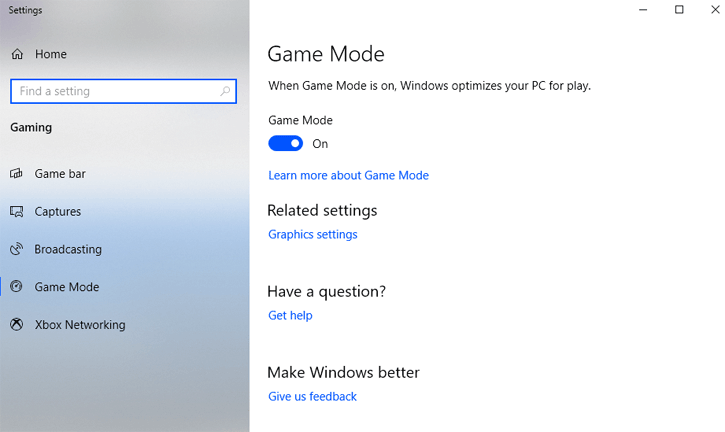
Follow these steps to enable the Game Mode in Windows 100 or Windows 11 PC:
- Press Windows + I, type game mode, and click Game Mode settings
- Switch on Game Mode or on the Gaming screen, select Game Mode.
With Game Mode switched on, you can use your PC’s resources to achieve the optimum or maximum frame rate. Please note that when game mode is enabled, Windows Update will also be suspended.
You can also play PC games on Android and iOS devices.
2. Update Your Graphics Drivers
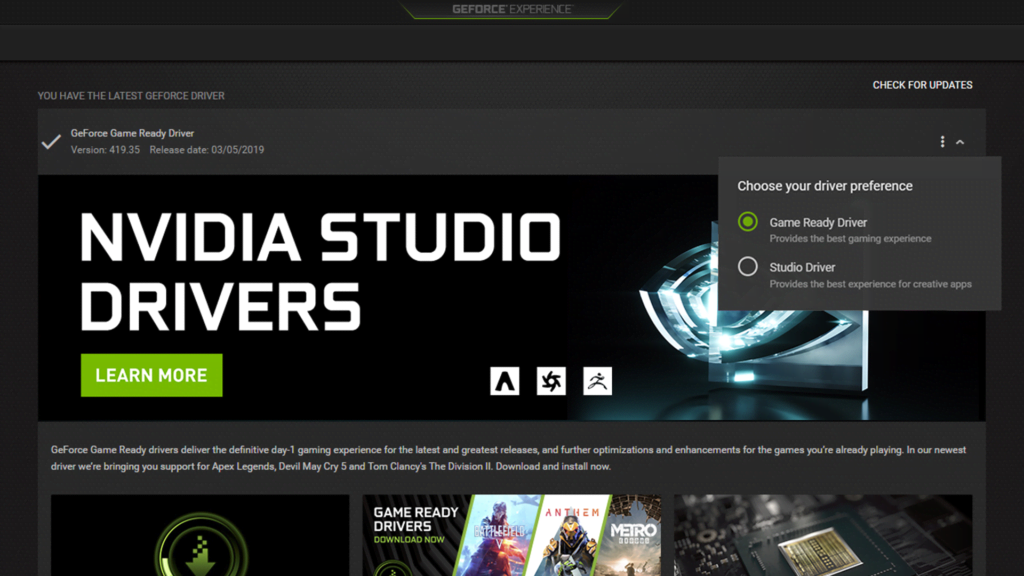
Unless you are experiencing issues, you don’t need to go out of your way to update your hardware drivers to optimize windows 10 or Windows 11 for gaming. However, your graphics card is an exception. Vendor drivers from Nvidia and AMD regularly include upgrades for the most recent games.
Installing the manufacturer’s driver and keeping it updated may yield a substantial performance boost on new games, mainly if you’re using Nvidia or AMD hardware. You may already view the Nvidia or AMD driver icon in your taskbar, but that doesn’t mean you have the most current version.
You can get the latest drivers for your graphics card from the Nvidia, AMD, or Intel websites by punching in your graphics card model, then clicking the download button.
3. Lower Game’s Resolution and Graphics Settings
Most PCs are not suited for graphics tweaking. If you like to live with something less than top-of-the-line, you may have to make some visual concessions to ensure a smoother experience and optimize windows 10 for gaming.
Lowering your game’s graphics settings can improve FPS by reducing the GPU’s workload.
There is no need to have a super-high-end system if you sacrifice graphics quality to play. Reducing the graphics settings on your game can improve FPS by reducing the load on the graphics card.
The graphics card won’t have to support as many pixels with each frame. In most games, the typical office laptop can’t even handle 1080p@60FPS.
However, some games might have trouble supporting 4K or even 2K resolutions, while others have slider controls, numerical settings, etc.
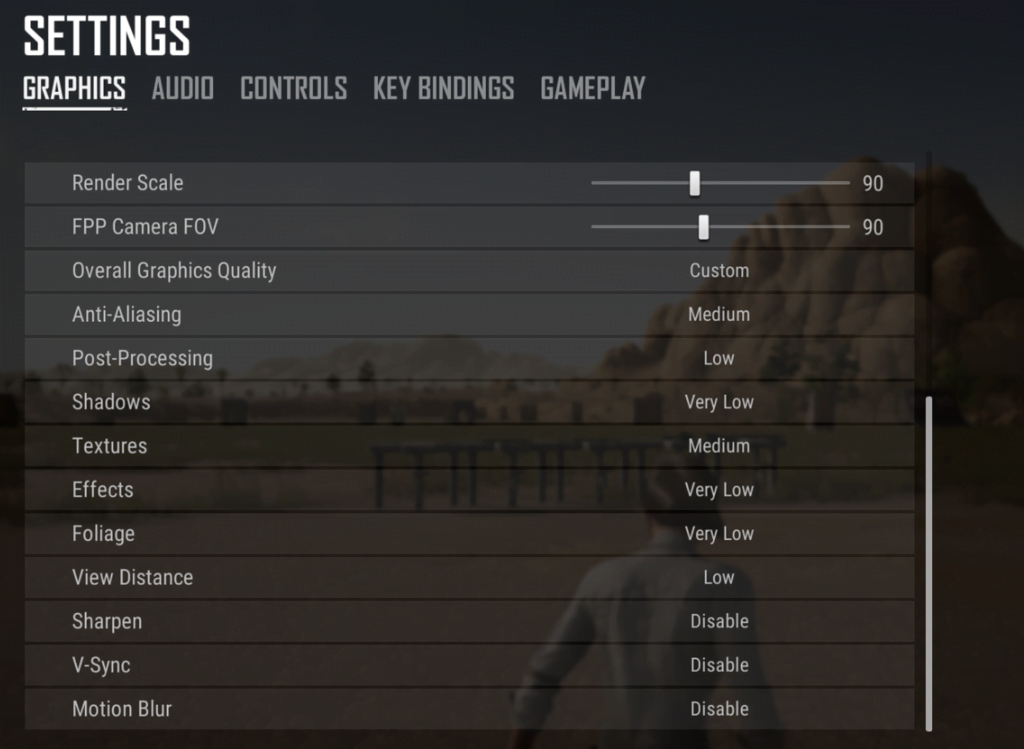
Try to find the proper balance between graphics quality and FPS by experimenting with various graphics settings.
4. Disable Automatic Updates
When you turn on the PC with Windows 10, you may be caught unaware and lose your save game, as there is no warning when the OS will be updated.
You don’t want Windows to update your OS while you’re playing, nor do you want your network connection to be limited while downloading updates in the background. If you don’t want Windows to reboot and update automatically, delay the automatic restart.
To avoid Windows Update downloads interrupting your gaming performance, follow these steps:
- Open Settings through the Windows key + I.
- Click Update & Security > Windows Update, then click Advanced Options.
- Now disable Restart this device as soon as possible when a restart is required to install an update.
- Click ‘Show a notification’ to delay the installation of updates for up to seven days and ‘Pause updates‘ to postpone the installation of updates for up to seven days.
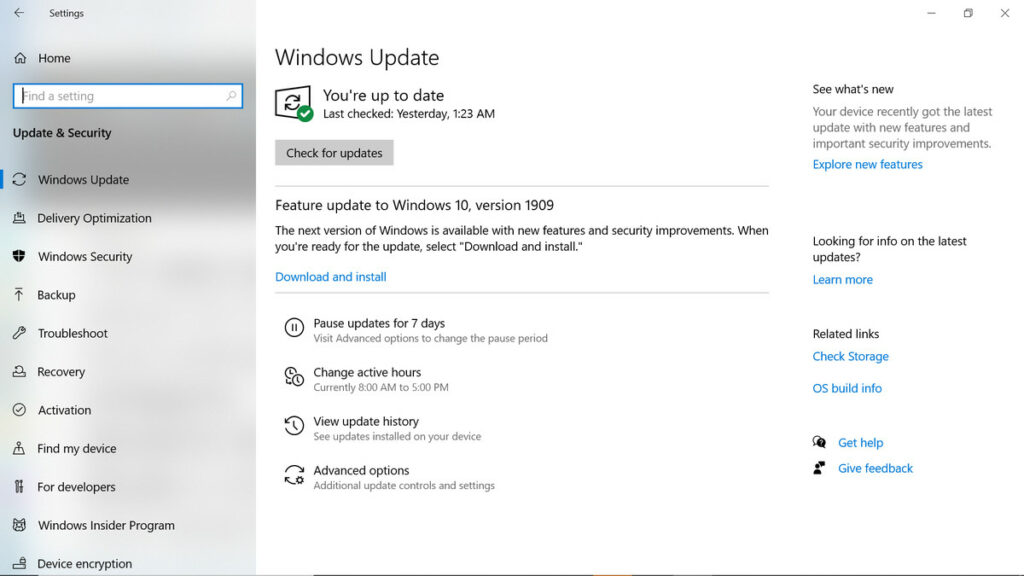
5. Disable Notifications
You can configure how and when you receive notifications in Windows 10 using Focus Assist. Notifications, usually accompanied by beeps and flashes, usually interrupt games.
Focus Assist enables you to determine how much time you spend working. You can turn off all notifications except alarms with Focus Assist. You can set Focus Assist to hide all other messages if you’re playing a game and want to optimize Windows 10 for gaming.
To do this task, follow these steps:
- Go to Settings > System > Focus Assist > Alarms Only.
- To minimize the impact of notifications, set When I’m playing a game to On. You can close the Settings window after you’ve completed the procedure.
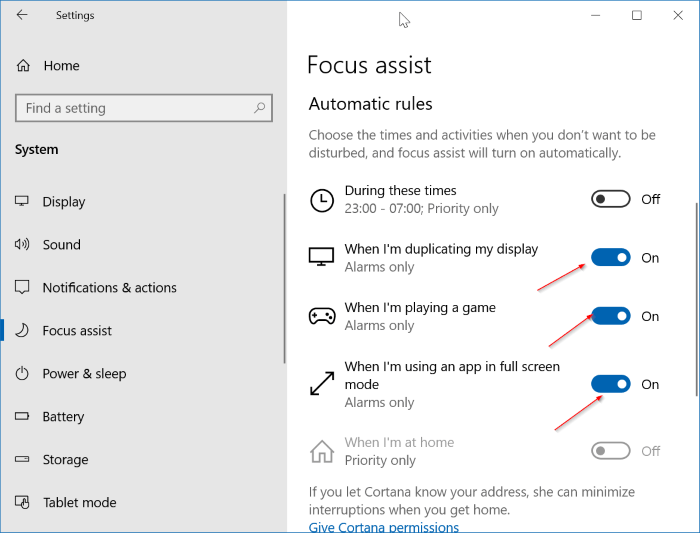
This will allow you to review notifications later without being distracted.
6. Wire Up Over Ethernet
If you are playing multiplayer games online, your internet connection has just as much or even more impact on your performance as your graphics hardware.
If your game is lagging, stuttering, or dropping connection constantly, you must improve your network connection to optimize Windows 10 for gaming.
Your computer can directly connect to your router via an Ethernet cable. If your computer is not next to your router, you can use powerline adapters to connect your computer to your network wirelessly.
You can even run an Ethernet cable across your kitchen ceiling when you have to. It can be good enough to get a strong enough connection with low latency.
7. Switch off Background Services
You can also disable specific services to optimize Windows 10 for gaming by preventing them from running in the background.
Background services often consume additional system resources, hindering foreground activities like gaming.
You can turn off background services using Settings -> Privacy -> Background Apps.
To prevent background applications from using resources, turn off the ‘Let apps run in the background’ toggle in the right column. You may also keep the main toggle on and deactivate individual apps.
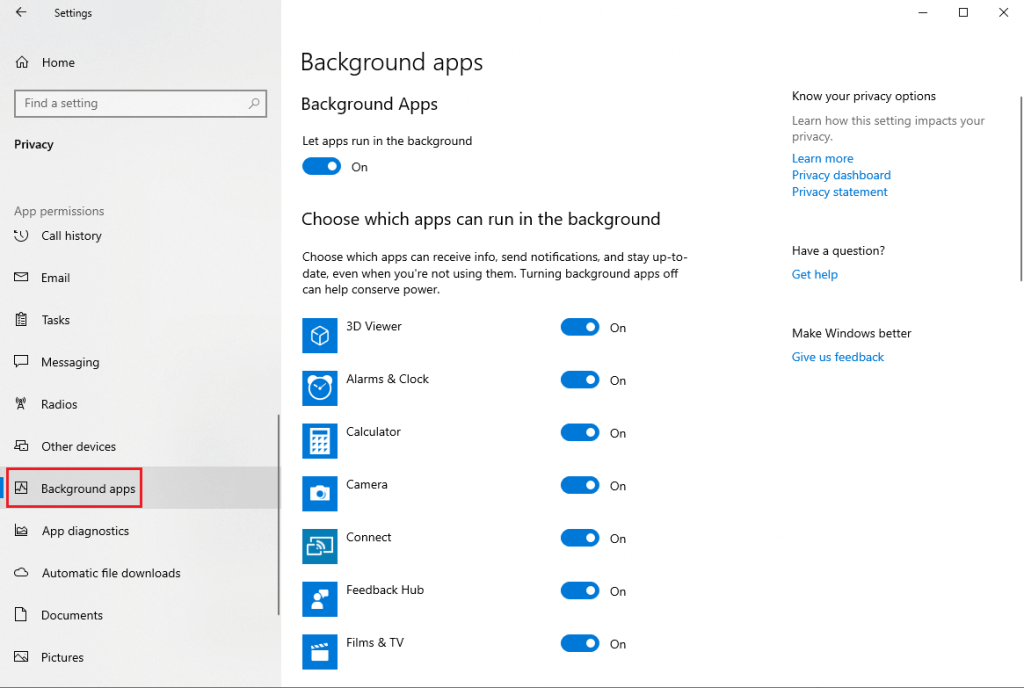
8. Adjust Your Mouse Settings
You may better suit specific settings on your mouse for working than playing. If you haven’t visited your mouse’s settings for a while, you should look at them.
You can change them in Windows 10 by going to Settings > Devices > Mouse > Additional Mouse Options.
In Windows 11, go to Settings > Bluetooth & Devices > Mouse > Additional mouse settings.
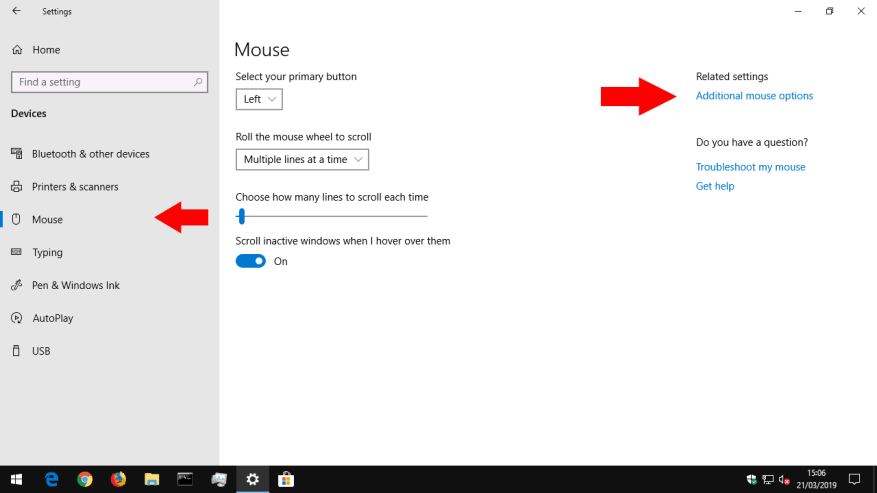
Ensure the pointer precision option is set to the sixth notch from the left, and the pointer precision is disabled. The pointer precision, also known as mouse acceleration, allows the cursor to move farther as you move the mouse faster.
This feature is beneficial in some situations but is not ideal for gaming, where you need to build muscle memory and anticipate where your cursor will land to shoot down enemies.
If you use a trackpad or have limited desk space, this setting might assist you, but most gamers turn it off.
You can now easily play Android games on Windows PC.
9. Optimize Power Settings
Some energy settings can limit CPU performance even when using a laptop or a computer.
You can optimize Windows 10 for gaming by selecting a performance-focused power plan from the battery icon on the notification bar and selecting Power Options.
You can open the power settings menu on desktops from Control Panel -> Power Options. Now click ‘Show additional plans’ and select a high-performance plan. If you don’t see the ‘Show additional plans‘ option in the left sidebar, click on ‘Create a power plan’ and select ‘High Performance.’
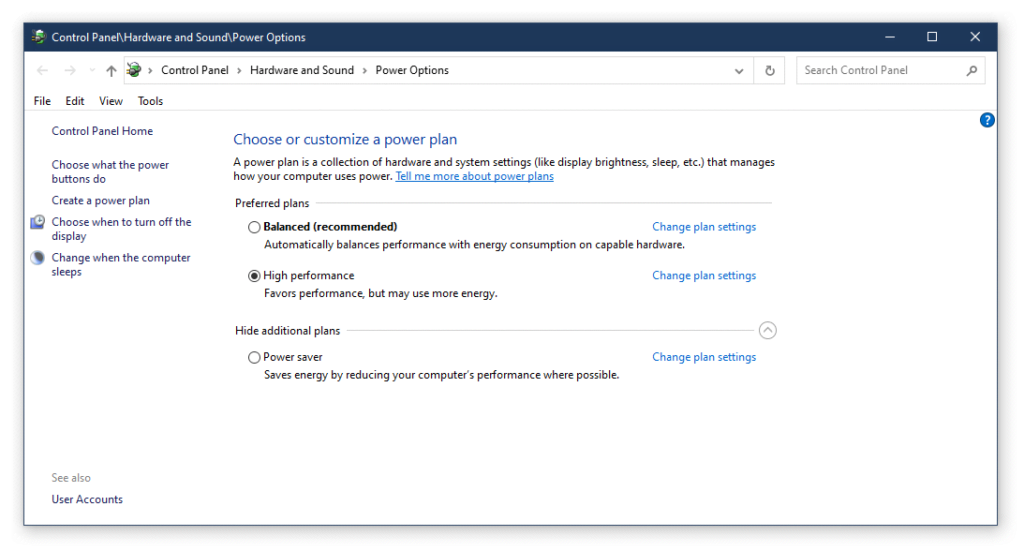
You can permanently alter the settings to suit your needs. Alternatively, you may change your battery settings directly from the system tray battery icon if you use a laptop. To do so, tap the icon and drag the slider to ‘Best performance.’
10. Disable Steam Auto-Updates
Using Windows to play games, you probably obtain and install them via Steam. Steam’s background updates are among the most significant issues.
This setting prevents you from preventing updates across all your games as they might eat up memory updating games you don’t play or lose network connectivity due to background updates.
To stop Steam from updating games in the background:
- Open Steam and click Settings.
- Select Downloads.
- Uncheck “Allow downloads during gameplay” to prevent background updates.
11. Tweak Visual Effects Settings
In complex video games, having a fast PC is necessary to outperform your competitors. If your computer is sluggish, you may not get the highest FPS.
To optimize Windows 10 or Windows 11 for gaming, you can disable the visual effects and shadows. By default, Windows 10 or WIndows 11 appearance settings are tuned towards aesthetics. However, you can improve performance by turning them off.
To do this,
- Go to System Properties -> Advanced tab -> Performance Settings -> Visual Effects.
- Now select the option “Adjust for best performance” and hit ‘Apply’ or ‘OK.’
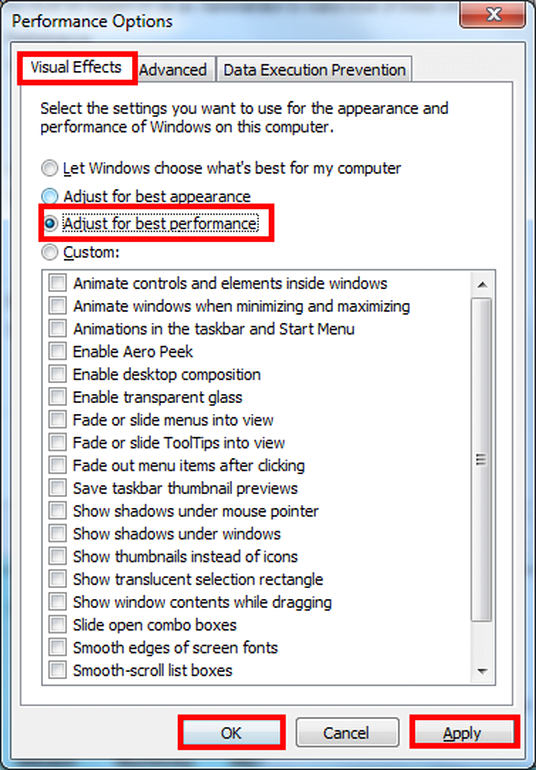
12. Keep Your Windows 10 Drivers Updated
Your PC gaming experience depends on your Graphics Processing Unit (GPU). However, your GPU runs faster and better with the latest Windows drivers. All graphics cards benefit from continually updated drivers, no matter how old or new.
Look for the GPU name and specs by following these steps:
- Right-clicking the Desktop and selecting Display settings > Advanced display settings.
- Click Display adapter properties at the bottom.
- You can update your driver through this window by clicking Properties > Driver > Update Driver.
An alternate option is to visit the manufacturer’s website to ensure your driver is up-to-date. To learn more about it, read our guide on how to check and update PC drivers.
13. Turn Off Accessibility Key Combinations
It’s annoying to accidentally open up to an error message while playing your favorite game. Fortunately, it’s possible to disable accessibility key combinations while playing games to avoid this nuisance and optimize Windows 10 and Windows 11 for gaming.
To do this,
- Go to Settings->Ease of Access->Keyboard (left menu).
- On the right column, ensure that the settings are turned off in the following order: ‘Use Sticky Keys,’ ‘Use Filter Keys,’ and ‘Use Toggle Keys.’
- Finally, at the bottom of the page, uncheck the following options:
- ‘Show a warning message when turning on Toggle Keys, Sticky Keys, or Filter Keys from the keyboard‘ and ‘Make a sound when turning Toggle Keys, Sticky Keys, or Filter Keys on or off from the keyboard.’
14. Ensure Optimum Broadband Speed and Latency
A slow internet connection with high latency might result in lag and slower game response times. Even though a fast, low-latency broadband connection won’t raise your FPS, it will decrease lag and improve response times, improving game performance.
If your connection is slow or has a high ping, dump it for something better. You can test your internet speed on Ookla, Fast.com, Google Fiber, and many other sites and apps.
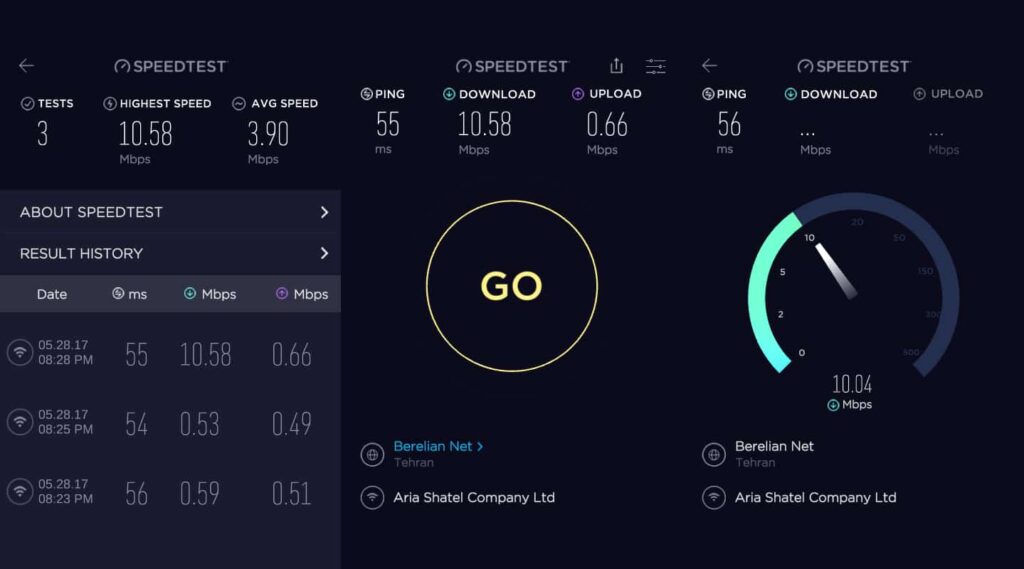
You can also boost your Wi-Fi 6/6E routers to ensure optimum speeds by employing a Wi-Fi mesh network or upgrading them.
15. Reinstall Windows or Get a New PC
The nuclear option is the last resort when all else fails. Your PC may be too old to run modern games with high hardware demands. Upgrading your Windows 10 PC may be the best way to increase gaming performance.
It may be expensive, but it will provide the best experience. If you’re uncertain about investing much money in shiny new hardware, try reinstalling Windows 10 to see if it helps your PC operate better.
A reinstallation may be required if Windows installations are screwed up beyond repair after years of abuse and neglect. You can optimize Windows 10 for gaming and get better performance without spending a cent if you reinstall Windows.
Also, read our guide on how to play High-End HD PC games on Low-End PC if you wish to use your old computer.
CONCLUSION
Despite game developers’ increased support for macOS and Linux, Windows is still the preferred OS for most PC gamers worldwide. Before you can optimize Windows 10 or Windows 11 for gaming performance, you must address specific issues. So use this in-depth guide to optimize your Windows 10 or Windows 11 computer for the best gaming performance.

